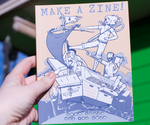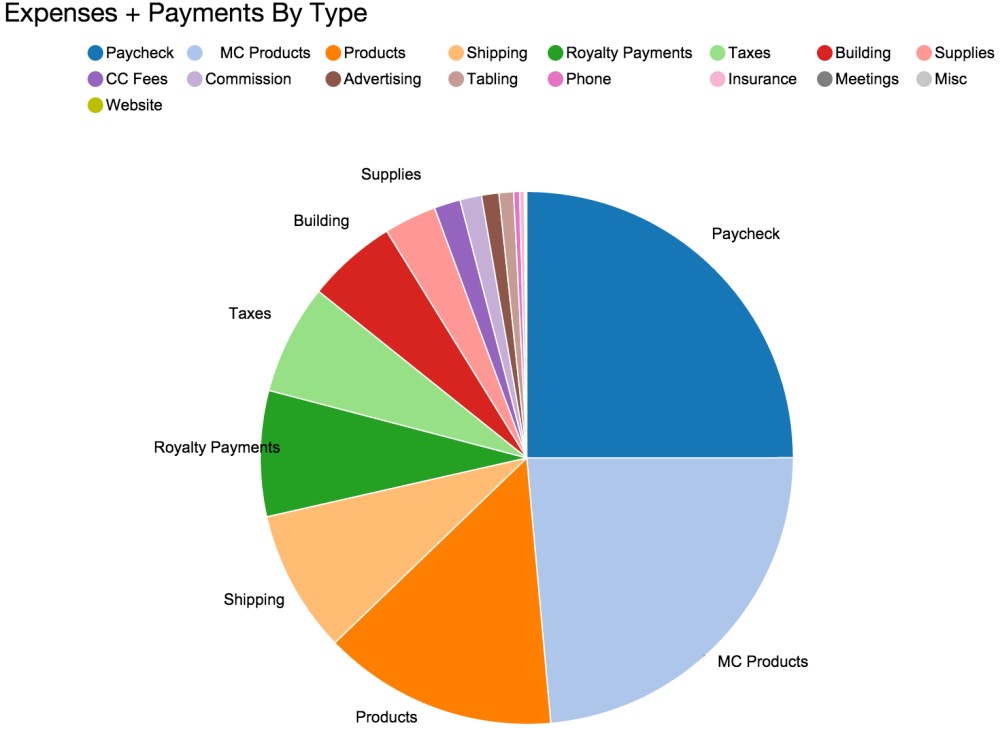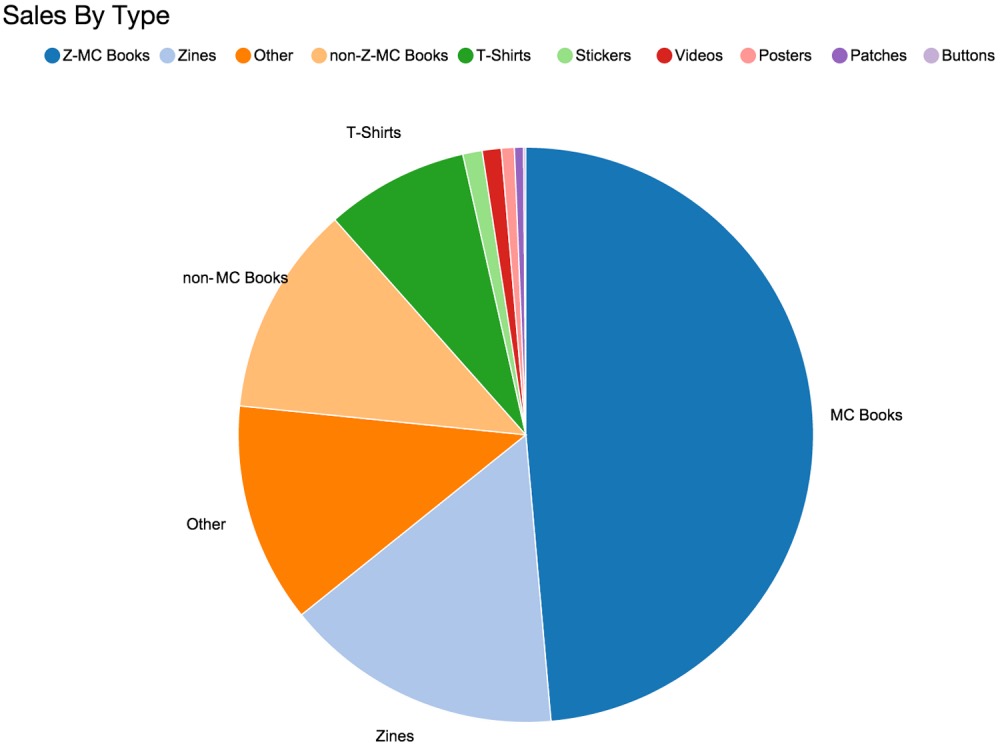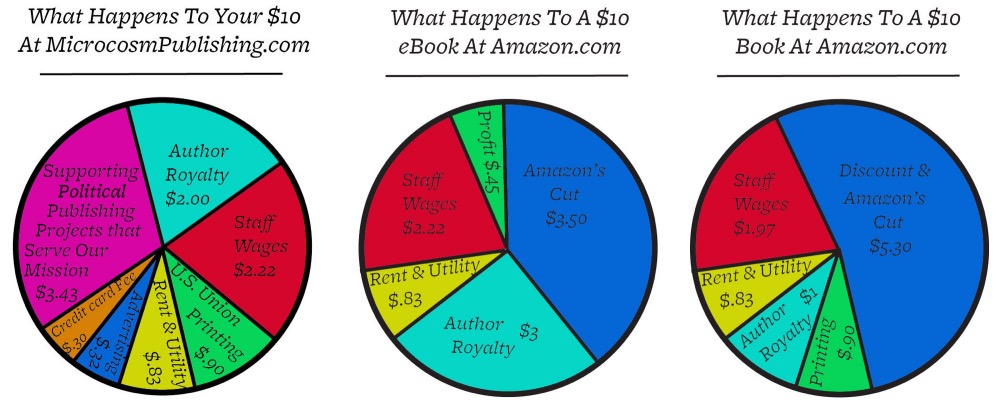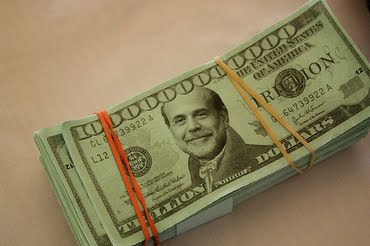Self-Promotion for Authors: Getting Psyched for Self-Promotion
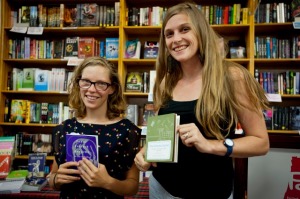 Hello again! This is a series for Microcosm authors (and other curious bystanders) about book marketing and publicity. The first post in the series was a rapid-fire outline of our job as the publisher of the book. There’s a lot of misinformation out there about what publishers do and don’t do (and a lot of variation in the reality, too), so hopefully this is helpful.
Hello again! This is a series for Microcosm authors (and other curious bystanders) about book marketing and publicity. The first post in the series was a rapid-fire outline of our job as the publisher of the book. There’s a lot of misinformation out there about what publishers do and don’t do (and a lot of variation in the reality, too), so hopefully this is helpful.
This next post gets started on the author’s role by focusing on a pretty common anxiety among authors: Self-promotion.
Many of our authors have no problem at all with promoting their work, and some have come to us with years of building up a successful body of work or a personal brand and are ready to grab a megaphone to tell the world about the book they haven’t even written yet. Many others experience discomfort akin to panic at the idea of standing up and talking to a room full of people about their book, using social media to broadcast sales pitches and positive reviews, or even telling friends and family that they wrote a book and that there’s an opportunity to buy it.
First of all, self-promotion anxiety is so normal as to be, well, the norm. That said, you’ve gone through all this work to produce a book. The more comfortable you are with talking about it with friends and strangers alike, online or off, the more people who want or need to read it will be able to. And we’re here to help you do that.
Here are some common concerns and what I’ve learned over the years, as a nervous author myself and working with many others, about how to tackle them:
Ok, good point. But there is a huge difference between actual spam (eg, twice-daily unsolicited marketing emails in bold, red, italic letters saying BUY NOW) and book promotion. Here’s another way to think about it: You just wrote a book about topics that you care deeply about. Other people who care deeply about the same things (or about you) are going to be excited to find out about, buy, and read your book. Your promotional role is to find them and offer them the opportunity to do this as easily as possible.
Practical tip: Think about what makes your book exciting and interesting. How did you get the idea for the book? When did it really come together? What have other people or your editor said that they like about your book? Write all of those things down and refer to them when you’re trying to find something to say about your book other beyond “it exists! buy it!”
Most people won’t want to read my book
That’s true. But you didn’t write this book to please everyone in the entire world (that would be the most boring book ever). You wrote it for your readers. That’s a very particular set of people and most of the job of promoting is finding them and talking to them (often about topics other than your book). Here’s yet another way to think about it: You’re part of a movement. Whatever your book is about—teaching in inner-city schools, making soap, cats, vegan cooking—it’s now become a building block in that bigger movement, and you’ve become a leader of that piece of the movement (and maybe a much bigger piece than just the one covered by your book). So your job is less to find random people and tell them you have a book, and more to connect with your movement about your book and the ideas in and around it.
Practical tip: Starting a blog or forum where you write about many related topics (but keep a purchase link to your book in the sidebar) is one way to do this. Social media is another. For many authors it makes sense to bring readers into the conversation as much as possible. For others it works to share parts of their personal experience with the book. For yet others, the best strategy is to speak at conferences, write guest blog posts, and otherwise tap into existing platforms. Your style is up to you!
If my book is good, then I shouldn’t need to promote it.
Sadly, sadly, sadly, this is not the case. If it were, all our jobs would be much easier. Thousands of books are being published every day, readers have more choices than they can even understand, and much as we have developed your book uniquely with its title, cover, marketing, and publicity plan, it is still necessary to go out there and tell the world why it’s worth taking a look at.
Practical tip: Practice describing your book in one sentence. We call this the Five Second Pitch. Find a friend, family member, or coworker who knows very little about your book and try the pitch out on them. How do they respond? Adjust as necessary. Once you’ve mastered this, think about other things that people engaged by this will want to know. Prepare a 30-second speech with more details about the uniqueness of your book and, if relevant, how it fits into existing news stories and trends.
Help, the critics are going to eat me alive!
Yeah, reviews are scary. It’s a mixed bag out there. Many famous and well-regarded authors have a policy of never reading reviews and we think this is a great idea. The psychology of it is unfortunate—your ten good reviews might leave you cold, while the one lukewarm one could have you grinding your teeth for years. We keep track of reviews for all of our books so that we can tell the world about the good ones and issue corrections for the factually inaccurate ones. So there’s no reason that you need to read your reviews or set up a google alert for your book unless you want to. Reviews don’t affect sales as much as everyone wants to believe (though bad reviews are better for sales than no reviews at all), so our advice is not to worry about them as much as possible. Easier said than done, we know!
Practical tip: Instead of googling yourself, google other authors whose books have sold well yet gotten mixed or terrible reviews. They often have very funny (and helpful) things to say about the experience.
First of all, let me reassure you: You did a great job. Your book is awesome. Only you could have written it, and you are perfectly qualified to speak about it, and the subject matter in it, on par with anyone else on the planet. We’re selective about what books we publish, and we don’t let them go to print until and unless they are good (and unique) inside and out, with strong, well-put-together contents that are compelling to a group of readers. No exceptions.
Secondly, a lot of people feel this way. Trust me, many very accomplished people who seem utterly cool and collected on the outside are often a total mess internally when they’re up on a stage, or doing an interview, or approached by a gregarious family friend at a party who wants to know all about their book. It takes courage for anyone to step up and promote their vision. You’ve already done a lot by writing a book about it—don’t stop there!
Practical tips: Practice, practice, practice. It truly does get easier. It helps to have someone you can call on for supportive and encouraging words when you’re experiencing self-doubt or stage fright. Also, figuring out exactly what you are promoting (It may help to think of it as not being you but rather your vision, your readers, and your movement) can help you take the stage as an expert in a way that feels supportive of your community of readers rather than uncomfortably self-aggrandizing.
*
Go out there and promote!
The next post is about promoting your book on social media. You can read more publishing wisdom like this in Joe Biel’s book A People’s Guide to Publishing.

